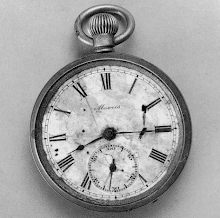 We write to honor the life of Geza Teleki. After a long battle with many health issues, Geza passed away on January 7, 2014, in his home on Szentendre Island, Hungary. He lived in Spring Valley from 1984 to 2003 at 3819 48th Street. We remember Geza for his deep concern over the cleanup and wellbeing of Spring Valley. He fought for a more thorough and transparent investigation into the buried munitions and chemical remains resulting from the World War I chemical weapons development and testing at the American University Experimental Station and neighboring properties. Geza eloquently spoke of these concerns while serving on the Spring Valley Restoration Advisory Board from its inception until he resigned in 2002.
Ginny Durrin & Ken Shuster
Northwest Current
January 29, 2014 (pg. 11)
Dr. Virginia Marie Weaver, an occupational health specialist at the Johns Hopkins Medical School, reported in a five-page clinic note last January that her patient, Geza Teleki, represented a puzzle for any health professional. Teleki, who in 2003 moved to Maryland after living in his family home on the 3800 block of 48th Street in Spring Valley for more than 30 years, suffers from diabetes, hypothyroidism, advancing kidney disease, colon disease and a heart ailment that may require surgery. This multi-organ breakdown occurred in a two-year period after more than a decade of robust good health ...
We write to honor the life of Geza Teleki. After a long battle with many health issues, Geza passed away on January 7, 2014, in his home on Szentendre Island, Hungary. He lived in Spring Valley from 1984 to 2003 at 3819 48th Street. We remember Geza for his deep concern over the cleanup and wellbeing of Spring Valley. He fought for a more thorough and transparent investigation into the buried munitions and chemical remains resulting from the World War I chemical weapons development and testing at the American University Experimental Station and neighboring properties. Geza eloquently spoke of these concerns while serving on the Spring Valley Restoration Advisory Board from its inception until he resigned in 2002.
Ginny Durrin & Ken Shuster
Northwest Current
January 29, 2014 (pg. 11)
Dr. Virginia Marie Weaver, an occupational health specialist at the Johns Hopkins Medical School, reported in a five-page clinic note last January that her patient, Geza Teleki, represented a puzzle for any health professional. Teleki, who in 2003 moved to Maryland after living in his family home on the 3800 block of 48th Street in Spring Valley for more than 30 years, suffers from diabetes, hypothyroidism, advancing kidney disease, colon disease and a heart ailment that may require surgery. This multi-organ breakdown occurred in a two-year period after more than a decade of robust good health ...
Geza P. Teleki testifies at DC City Council hearing
Weaver wrote that her patient "could have had exposure to volatile chemicals from soil evaporation or water leaking into his basement. He could have had exposure to particulates and metals through gardening. The extent of the exposure remains unknown due to the absence of extensive sampling during the time he was in the home." She further wrote that the nature of the chemicals still in the ground "is unclear since they were experimental -- and the byproducts that could have formed over the 80 years are even more unclear."
Charles Bermpohl
Northwest Current
November 10, 2004 (pg. B-3)
Nevermore, I realized as I hastened homeward to my own bed ... would I regard chimpanzees as "mere animals." On that singular eve, which also marked the twilight of my youth, I had seen my species inside the skin of another ... Having spent some years in the company of chimpanzees, both free and confined individuals, I find myself no longer able to cleave to the majority human view of chimpanzees as inferior beings.
Geza P. Teleki
They Are Us (1993)
.jpg)
.jpg)
.jpg)
.jpg)
.jpg)
.jpg)
a.jpg)
pg3.jpg)
b.jpg)

.jpg)
.jpg)
.jpg)
.jpg)
.jpg)
.png)
.jpg)
.jpg)
.jpg)
.jpg)
.jpg)
.jpg)
.jpg)
.jpg)
.jpg)
.jpg)
.jpg)

.jpg)
.jpg)
.jpg)
.jpg)


